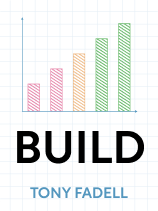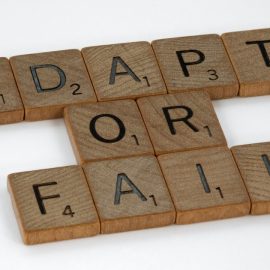

This article is an excerpt from the Shortform book guide to "Build" by Tony Fadell. Shortform has the world's best summaries and analyses of books you should be reading.
Like this article? Sign up for a free trial here.
What’s the most important step when creating a product? How does a product’s story guide both the product and its marketing?
Tony Fadell wrote a book called Build: An Unorthodox Guide to Making Things Worth Making. He says that the key to knowing what is actually worth making is in discovering your story. Your product story answers vital questions about your product, so it’s an indispensable step in the process.
Read on to learn about product storytelling from Fadell, along with some related advice from Eric Ries, John Brooks, and Donald Miller.
Product Storytelling
Once you have a good idea for a product, the experience to start a company, and the right people with which to build them, how do you start building the product? The most crucial step, Fadell argues, is product storytelling. To discover your story, you must figure out who wants your product and why, design every conceivable aspect of your product around that story, and test to ensure that story works.
(Shortform note: The Lean Startup author Eric Ries agrees that it’s crucial to keep your customers’ desires in mind when creating your product. However, he recommends that you figure out those desires as quickly as possible in order to maximize profitability. To do so, first figure out what you think your customers want, then create a minimum viable product (MVP) to test whether they actually want it. This MVP may involve no hardware at all; you could simply build a landing page that describes your product’s features and see how much traffic you attract.)
Fadell explains that thinking through the whole story with your team (especially marketing) is essential because it drives both what you build and how you sell it—to investors and later to consumers. Many companies focus too much on the product itself because that’s what they think they’re selling; but in reality, a company sells an experience with a product—from how the customer installs it to the customer service they encounter if they run into trouble. Thinking through every aspect of that story will help you build and provide the best possible experience.
(Shortform note: When thinking through your product story, keep your ego in check. Otherwise, you risk making some ill-advised choices—as the executives at Ford did when creating the Ford Edsel, a car that’s considered one of the biggest product launch failures of all time. In Business Adventures, John Brooks argues that this happened because the egos of Ford’s executives, designers, and marketers led them to build a product based on what they thought consumers wanted rather than one that met the market’s actual demands. Moreover, Ford built up marketing hype but failed to deliver on any of it; early Edsel buyers complained about subpar quality and reliability, and Ford stopped manufacturing the car just two years after its release.)
To tell an effective story, include three elements. First, remind people of the annoyance you’re solving so that they can get excited about the solution. Second, provide both logical and emotional reasons that your solution is the best possible choice. Third, simplify technical concepts so that your customers can easily grasp them and relate them to others. Try using analogies. For example, Apple’s description of the iPod as “1,000 songs in your pocket” allowed people to quickly understand what the iPod did and easily explain it to their friends. If you struggle to determine your story, try writing a press release to clarify what you want your product to do and why it matters.
| A Different Kind of Product Story Building a Storybrand author Donald Miller also recommends writing down a good, multi-part story when building your product. But rather than a press release, he asserts that you should create a “storyline”: a document telling the story of how your brand helps customers achieve their goals. Miller recommends that you include seven elements in this storyline. First, understand 1) what the customer wants and 2) the problem that prevents them from achieving those desires. Then, get the customer to trust you by 3) demonstrating that you understand their needs and 4) showing competence in dealing with this problem. Finally, 5) tell the customer to buy your product, 6) warn them of the consequences of not doing so, and 7) demonstrate the happy ending of buying your product. Miller’s system doesn’t include information about explaining technical concepts with analogies, presumably because his text isn’t directed primarily toward technical companies. However, he does suggest another way to encourage word-of-mouth marketing: Implement a referral system that enables happy customers to recommend your product to others and rewards them for it. |

———End of Preview———
Like what you just read? Read the rest of the world's best book summary and analysis of Tony Fadell's "Build" at Shortform.
Here's what you'll find in our full Build summary:
- Entrepreneur Tony Fadell's memoir, from the iPhone to Nest
- Advice for succeeding in every stage of your career, from beginners to CEOs
- Tips for building a product-based business and a great team






